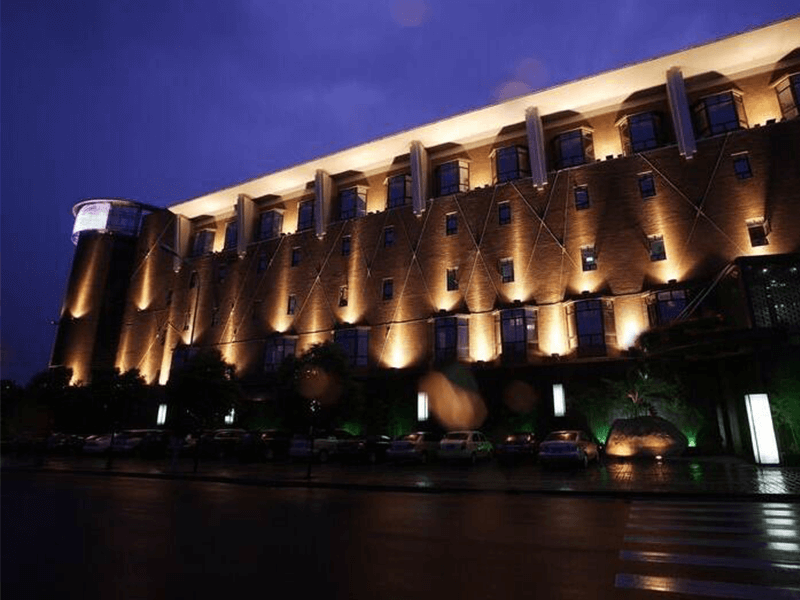Facade lighting, often considered a subtle yet powerful art form, holds paramount significance in architecture, urban design, and cityscapes. Thoughtfully planned facade lighting designs have the potential to accentuate the prominent characteristics of a building. It transcends the conventional idea of illumination to become a cornerstone in creating visually compelling and dynamic environments.
Enhancing Aesthetics: One of the primary roles of facade lighting is to improve the visual appeal of buildings and structures. It highlights architectural details, textures, and unique design elements, transforming them into mesmerizing nighttime spectacles. Well-designed lighting can breathe new life into even the most ordinary structures, making them stand out and contributing to the overall beauty of a location.
They are creating Landmarks: Iconic buildings and landmarks often owe their recognition to distinctive facade lighting. Illuminating landmarks makes them more visible and reinforces their significance within a city or region. These landmarks become symbols that instill pride in the community and attract tourists.
Cultural and Historical Preservation: Facade lighting plays a crucial role in preserving buildings’ cultural and historical heritage. It enables the careful illumination of historical structures, museums, and heritage sites, allowing them to be appreciated even after dark. This preservation of cultural identity is essential for passing down heritage to future generations.
Safety and Security: Beyond aesthetics, facade lighting enhances safety and security. Well-lit buildings and public spaces deter crime by reducing hiding spots for potential wrongdoers. Adequate lighting also promotes a sense of security among pedestrians, encouraging people to use public spaces in the evening.
Navigation and Wayfinding: In urban areas, facade lighting aids navigation by providing visual cues and landmarks. It helps pedestrians and drivers orient themselves within the cityscape, making it easier to find their way around.
Economic Impact: Aesthetic and well-lit facades can positively impact property values and economic development. Areas with visually appealing buildings and streetscapes attract businesses and investments, increasing property values and economic growth.
Environmental Considerations: Modern facade lighting can be designed with energy efficiency in mind, using LED technology and intelligent controls to minimize energy consumption and light pollution. This environmentally responsible approach aligns with sustainability goals and reduces a city’s carbon footprint.
Community Identity: Facade lighting can convey a sense of identity and pride within a community. It fosters a sense of belonging and ownership among residents, who take pride in the illuminated beauty of their neighborhoods.
Tourism and Recreation: Tourist destinations and recreational areas leverage facade lighting to create immersive and memorable experiences. It adds vibrancy to tourist attractions, shopping districts, and entertainment zones, encouraging visitors to explore and spend more time in these areas.
Dynamic Cityscapes: In the evening, well-planned facade lighting can transform a cityscape into a dynamic and visually striking environment. It creates a unique atmosphere that draws people to public spaces, fostering social interactions and community engagement.
